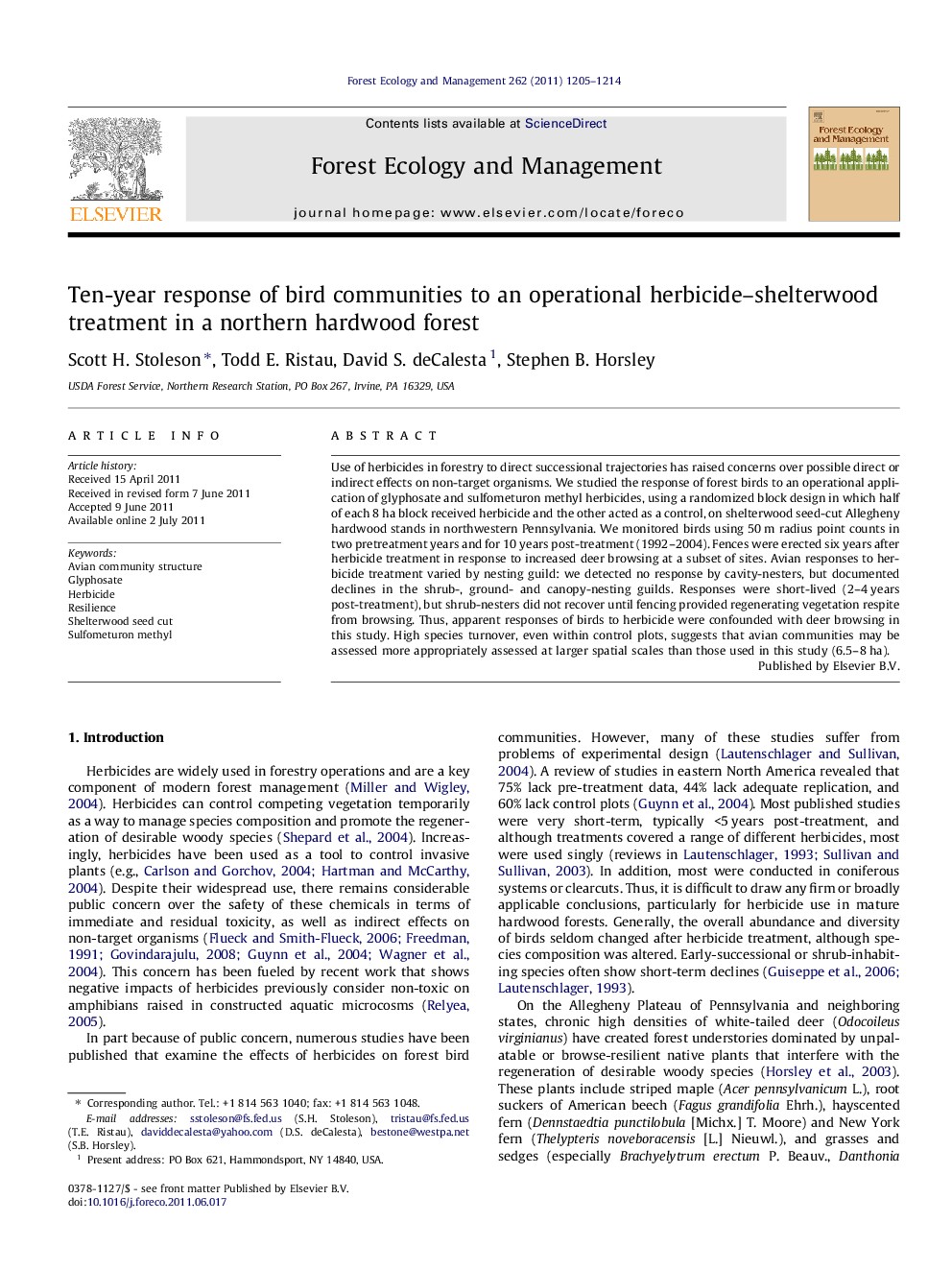| Article ID | Journal | Published Year | Pages | File Type |
|---|---|---|---|---|
| 87996 | Forest Ecology and Management | 2011 | 10 Pages |
Use of herbicides in forestry to direct successional trajectories has raised concerns over possible direct or indirect effects on non-target organisms. We studied the response of forest birds to an operational application of glyphosate and sulfometuron methyl herbicides, using a randomized block design in which half of each 8 ha block received herbicide and the other acted as a control, on shelterwood seed-cut Allegheny hardwood stands in northwestern Pennsylvania. We monitored birds using 50 m radius point counts in two pretreatment years and for 10 years post-treatment (1992–2004). Fences were erected six years after herbicide treatment in response to increased deer browsing at a subset of sites. Avian responses to herbicide treatment varied by nesting guild: we detected no response by cavity-nesters, but documented declines in the shrub-, ground- and canopy-nesting guilds. Responses were short-lived (2–4 years post-treatment), but shrub-nesters did not recover until fencing provided regenerating vegetation respite from browsing. Thus, apparent responses of birds to herbicide were confounded with deer browsing in this study. High species turnover, even within control plots, suggests that avian communities may be assessed more appropriately assessed at larger spatial scales than those used in this study (6.5–8 ha).
► Bird response to a shelterwood–herbicide treatment varied among nesting guilds. ► Shrub-nesters declined significantly, canopy and ground species slightly. ► Shrub-nesters did not recover until deer were excluded. ► After 10 years, control assemblage more similar to treated than to pre-treatment.
